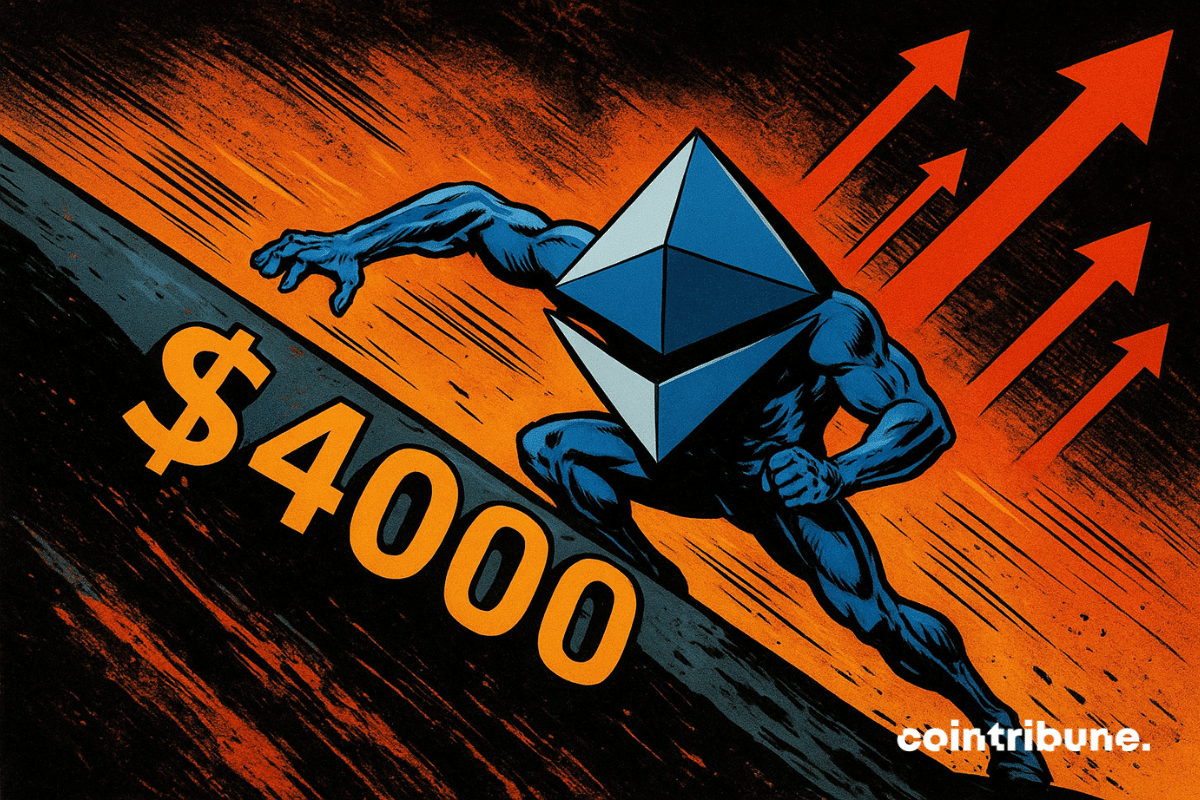Best Crypto to Buy: Chainlink Puts S&P Ratings On-Chain, Render Scales AI Power While BlockDAG Presale Hits $430M+
As of October 2025, the global crypto market remains in a fragile yet fascinating equilibrium. Following heavy liquidations earlier this month, triggered by President Trump’s 100% tariffs on Chinese tech exports, total crypto capitalization has slipped to $3.7 trillion, down nearly 9.5% from its October peak.
Bitcoin trades near $108,000, while Ethereum holds at $3,900, as traders rotate into the growing $300 billion stablecoin market. Yet beneath the cautious sentiment, a quiet structural shift is unfolding. Institutional adoption continues through spot ETFs, derivatives volumes hit record highs, and a new wave of projects, Chainlink, Render, and BlockDAG, is redefining blockchain’s core layers: data, compute, and scalability.
Chainlink: Anchoring Institutional Trust in On-Chain Finance
Chainlink (LINK) just bridged another gap between traditional finance and blockchain with its collaboration with S&P Global Ratings. Through DataLink, S&P’s Stablecoin Stability Assessments (SSAs), covering credit, market, and custody risks, are now published on-chain for the first time. This move arrives at a critical moment as institutions seek standardized frameworks for stablecoin risk analysis, especially under the new GENIUS Act in the U.S. With the stablecoin market surpassing $300 billion, Chainlink is positioning itself as the backbone of verified data in DeFi.
The integration allows 2,400+ financial institutions and protocols in the Chainlink ecosystem to access S&P’s trusted metrics directly through smart contracts. Having powered over $25 trillion in transaction value and securing nearly $100 billion in DeFi TVL, Chainlink continues to cement itself as the trusted layer of on-chain data in an era demanding institutional transparency.
Render: Fueling the Decentralized Compute Boom
While most of the market hesitates, Render (RNDR) is scaling aggressively into the AI and distributed compute space. Currently trading at around $2.45 with a $1.75 billion market cap, Render is expanding its technical backbone through RNP-021, which introduces enterprise-grade GPUs such as NVIDIA H200 and AMD MI300X. This upgrade comes as network demand accelerates, frames rendered are up 31% month-over-month, and tokens burned have risen 41%, clear indicators of growing real-world usage.
Analysts project potential upside to $6–$7 by late 2025, driven by increasing demand for AI rendering, video, and image workloads. In a market still digesting macro shocks, Render’s steady performance demonstrates how decentralized infrastructure can thrive independently of speculative cycles. Its ecosystem is no longer just about graphics, it’s about becoming the AI layer of Web3.
BlockDAG: The Scalability Standard for Web3’s Future
In a market defined by volatility and shifting sentiment, BlockDAG (BDAG) stands out for its technical clarity rather than speculation. The project has raised more than $430 million and sold over 27 billion coins, showing consistent investor confidence. Its Awakening Testnet recently increased network speed from 800 to 1,400 transactions per second, using a hybrid DAG + Proof-of-Work model that processes multiple blocks simultaneously. This structure reduces congestion and energy waste while maintaining decentralization, addressing one of the core limitations of legacy blockchains.
More than 4,500 developers are building 300+ dApps on the network ahead of its Genesis Day release. With EVM compatibility, Ethereum-based projects can transition easily, lowering friction for adoption. The ecosystem also integrates accessible mining through the X1 mobile app and X10–X100 hardware series, extending participation beyond traditional miners.
At the current $0.0015 presale price, compared to a $0.05 target listing, BlockDAG’s valuation still reflects an early-stage phase despite strong fundamentals. For investors looking for long-term infrastructure exposure, projects with real throughput, developer activity, and network design, BlockDAG offers a credible case for inclusion. It’s less about hype, more about the architecture quietly preparing for the next market cycle.
The Macro Backdrop
Even as the market contracts under macro pressure, the ecosystem’s foundation is maturing. Chainlink is standardizing risk for institutions, Render is decentralizing compute for the AI economy, and BlockDAG is rewriting the performance baseline for blockchain networks. The volatility that pushed investors toward stablecoins is also accelerating the shift toward projects with tangible infrastructure and enterprise use cases. This is the divergence point, where the next phase of the bull cycle won’t be led by speculation but by systems built to last.
As traditional finance braces for geopolitical shocks, Web3’s most resilient players are quietly preparing for expansion. When confidence returns, it’s not meme coins or hype tokens that will lead the recovery, it’s Chainlink, Render, and BlockDAG, the three projects defining what the next era of blockchain truly looks like: connected, intelligent, and infinitely scalable.
Presale: https://purchase.blockdag.network
Website: https://blockdag.network
Telegram: https://t.me/blockDAGnetworkOfficial
Discord: https://discord.gg/Q7BxghMVyu
The post Best Crypto to Buy: Chainlink Puts S&P Ratings On-Chain, Render Scales AI Power While BlockDAG Presale Hits $430M+ appeared first on Blockonomi.
You May Also Like

CME Group Inc. (CME) Stock: Rises as Q3 Earnings Beat Estimates Despite Revenue Dip

Wormhole launches reserve tying protocol revenue to token
